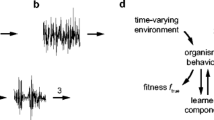This articles discusses the question of which higher brain functions are in fact completely determined by the environment and past history of a person or whether the brain is to some extent free to choose a behavioral response in order to achieve a desired aim. We attempt to approach this problem, which has an important general philosophical sense, from the point of view of current concepts of the operation of the brain. The article has four sections. The first addresses the theoretical views of the possibility that free choice exists, including concepts of free choice as a useful illusion, the applicability of quantum laws to the operation of the brain, and the theory of mentalism. The remaining three sections discuss increasingly complex manifestations of brain activity – choice reactions, thought, and creativity. We conclude that age-related increases in the complexity of brain functioning are accompanied by increases in the number of unpredictable but often effective decisions. This may be linked both with an increase in stochastic processes in the brain and with the role of top-down determinations from higher mental functions on brain processes, in accordance with the theory of mentalism.
Similar content being viewed by others
References
Anokhin, P. K., Guidelines on the Physiology of Functional Systems, Meditsina, Moscow (1975).
Aziz-Zadeh, L., Kaplan, J. T., and Iacoboni, M., “’Aha!’: The neural correlates of verbal insight solutions,” Hum. Brain Mapp., 30, No. 3, 908–916 (2009).
Bekhtereva, N. P., The Healthy and Sick Human Brain, Nauka, Leningrad (1980), 2nd ed.
Bernad, E. M., Hall, J. R., Steffen, B. V., and Patrick, C. J., “Violent offending predicts P300 amplitude,” Int. J. Psychophysiol., 66, 161–167 (2007).
Dierks, T., Linden, D. E., Jandl, M., et al., “Activation of Heschl’s gyrus during auditory hallucinations,” Neuron, 22, No. 3, 615–621 (1999).
Fink, A., Grabner, R. N., Benedek, M., et al., “The creative brain: investigation of brain activity during creative problem solving by means of EEG and fMRI,” Hum. Brain Mapp., 30, 734–748 (2009).
Gianotti, L. R. R., Figner, B., Richard, P., et al., “Why some people discount more than others: baseline activation in the dorsal PFC mediates the link between COMT genotype and impatient choice,” Front. Neurosc. (2012), doi: 10.3389/fnins.2012.00054.
Il’yuchenok, I. R., Sysoeva, O. V., and Ivanitskii, A. M., “Two semantic system in the brain for rapid and slow discrimination of abstract and concrete words,” Zh. Vyssh. Nerv. Deyat., 57, No. 5, 545–554 (2007).
Ivanitskii, A. M., “‘Reading the brain:’ advances, potential, and ethical problems,” Zh. Vyssh. Nerv. Deyat., 62, No. 2, 133–142 (2012).
Ivanitskii, A. M., Portnova, G. V., Martynova, O. V., et al., “Brain mapping in verbal and spatial thought,” Zh. Vyssh. Nerv. Deyat., 63, No. 6, 677–686 (2013).
Ivanitskii, A. M., Strelets, V. B., and Korsakov, I. A., Information Processes in the Brain and Mental Activity, Nauka, Moscow (1984).
Ivanitskii, G. A., Naumov, R. A., and Ivanitskii, A. M., “Techniques for identifying the type of thought operations occurring in the brain using electroencephalogram patterns,” Tekhnol. Zhiv. Sistem, 4, No. 5–6, 20–28 (2007).
Livanov, M. N., “The electroencephalogram and thought,” Psikholog. Zh., 3, No. 2, 127–237 (1982).
Mihov, K., Denzler, M., and Furster, J., “Hemispheric specialization and creative thinking: A meta-analytic review of lateralization of creativity,” Brain Cogn., 72, 442–448 (2010).
Nandrino, J.-L. and Faid El Massioui, F. E., “Temporal localization of the response selection processing stage,” Int. J. Psychophysiol., 19, 257–261 (1995).
Penrose, R., The Shadows of the Mind: A Search for the Missing Science of Consciousness, Chapter 1, Why We Need New Physics to Understand the Mind [Russian translation], Institute of Computer Technologies, Moscow, Izhevsk (2003).
Posner, M. J. and Raichle, M. E., Images of Mind, “Scientific American” Library, New York (1997).
Prigozhin, I. and Stengers, I., Order from Chaos, Progress, Moscow (1986).
Russo, P. M., De Paskalis, V., Varriale, V., and Barratt, E. S., “Impulsiveness, intelligence and P300 wave: an empirical study,” Int. J. Psychophysiol., 69, No. 2, 112–118 (2008).
Sauseng, P., Holz, E., and Griesmayr, B., “Human oscillatory brain activity dissociates sub-processes of visual working memory,” Int. J. Psychophysiol., 77, No. 3, 207–208 (2010).
Sechenov, I. M., Reflexes of the Brain: An Attempt to Put the Origin of Mental Phenomena on a Physiological Basis, with a Biography I. M. Sechenov, URSS, Moscow (2014), 2nd ed. (World Psychology Heritage).
Sidorina, V. V., Kuleshova, E. P., and Merzhanova, G. Kh., “Cortical and dorsal striatal neuron activity in animals in a ‘right to choose’ food reinforcement situation,” Zh. Vyssh. Nerv. Deyat., 63, No. 2, 269–279 (2013).
Simonov, P. V., “Spark contacts,” Novyi Mir, No. 9, 188–205 (1971).
Simonov, P. V., Lectures on the Workings of the Brain. A Needs/Information Theory of Higher Mental Activity, Institute of Psychology, Russian Academy of Sciences, Moscow (1998).
Smith, S. M., Brown, H. O., Toman, J. E. P., and Goodman, L. S., “Lack of cerebral effects of D-tubocurarine,” Anesthesiology, 8, 1–14 (1947).
Sperry, R. W., “The perspectives of the mentalist revolution. The appearance of the new scientific philosophy,” in: Brain and Mind [Russian translation], D. I. Dubrovskii (ed.), Nauka, Moscow (1994), pp. 20–44.
Sternberg, S., “High-speed scanning in human memory,” Science, 153, 652–654 (1966).
Sutton, S., “The specification of psychological variables in an average evoked potential experiment,” in: Average Evoked Potentials. Methods, Results and Evaluations, E. Donchin and D. B. Lindsley (eds.), NASA, Washington (1969).
Tarasova, I. V., Volf, N. V., and Razumnikova, O. M., “Changes in EEG coherence on execution of an imaginative creative task in men and women,” Byull. Sib. Otdel. Ros. Akad. Med. Nauk, No. 1, (123), 116–122 (2007).
Author information
Authors and Affiliations
Corresponding author
Additional information
Translated from Zhurnal Vysshei Nervnoi Deyatel’nosti imeni I. P. Pavlova, Vol. 65, No. 4, pp. 503–512, July–August, 2015.
Rights and permissions
About this article
Cite this article
Ivanitskii, A.M. Determinism and Free Choice in the Operation of the Brain. Neurosci Behav Physi 46, 1082–1089 (2016). https://doi.org/10.1007/s11055-016-0355-1
Received:
Accepted:
Published:
Issue Date:
DOI: https://doi.org/10.1007/s11055-016-0355-1



